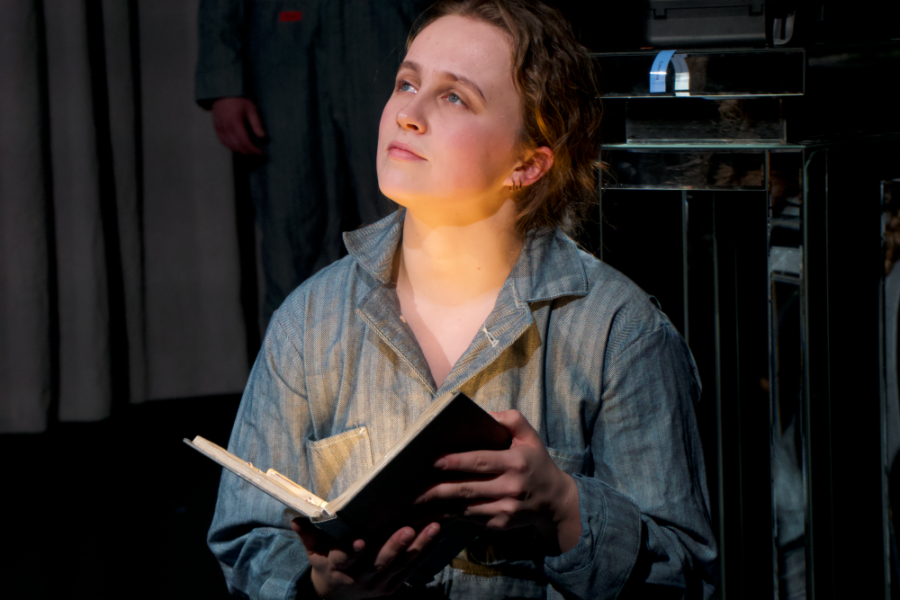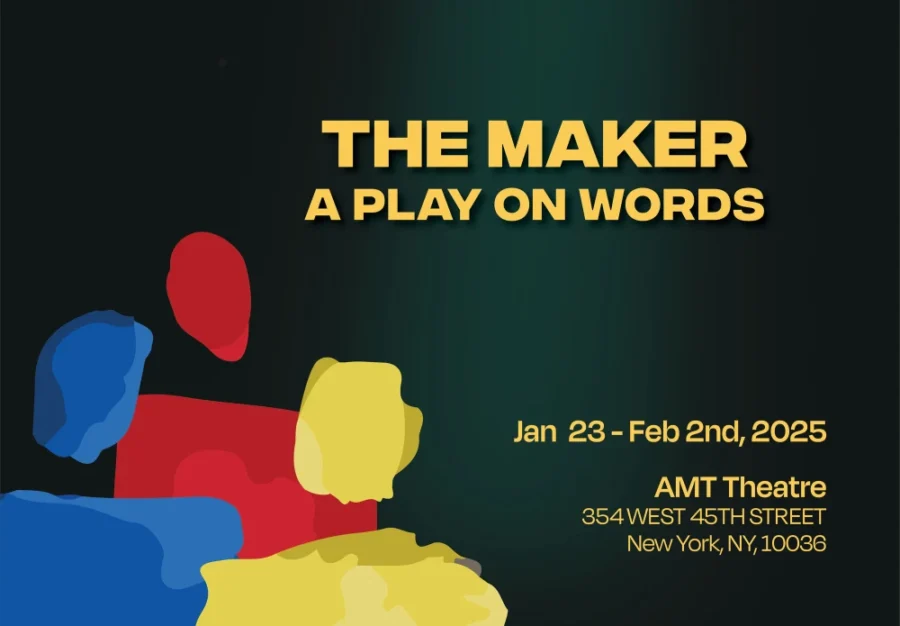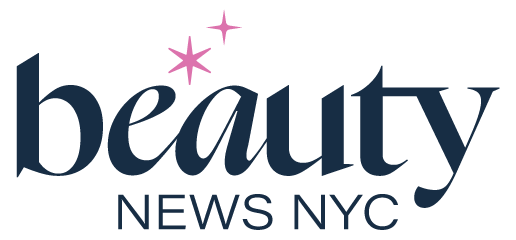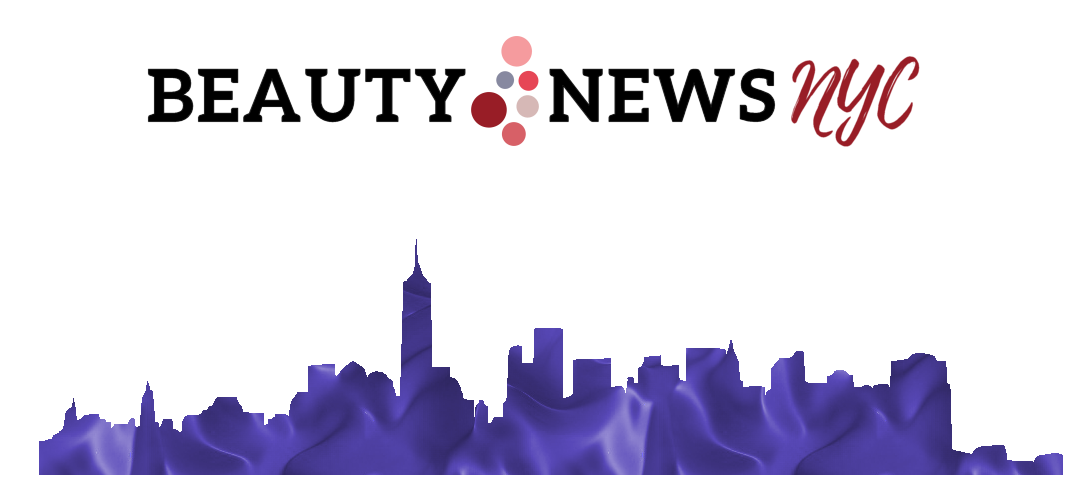Back in March, I was lucky enough to see the play, “Flight Risk,” written by Dakota Silvey and directed by Dougie Robbins (check out my interview with Dougie here). Now, nearly a year later, Dakota has written another play, “The Maker,” also directed by Dougie, and this one is headed for Off-Broadway!
Dakota put me in touch with the fabulous Leah Temple Lang, one of the show’s actors, for a Q&A session. Below is Beauty News NYC‘s exclusive interview:

Tell me about yourself! What inspired the journey into acting, and how did you become involved with “The Maker” and the role of YELLOW?
I grew up in Dublin, Ireland, and spent my entire childhood doing every activity you could think of – my parents both worked full time, so I had an extracurricular every day, and grew up very close to my Granny. She taught me how to play piano when I was about three years old, my first foray into the arts, and bought me my first full-size violin. I took a break from pursuing the arts when I was about seventeen, because I had committed to playing Division One Golf at college in the States. I didn’t get back into acting until my senior year of college two years ago.
The first time I remember actually understanding that acting was a job that you could do was when I was probably about seven years old, and I received a box set of Shirley Temple films for Christmas. I watched them all the time and I remember thinking she kind of looked a little bit like me (I had curly blonde hair). I must have asked my mum about it, and then I realized that she got to play pretend, dance, and sing for other people’s enjoyment as a job – how cool is that?! And since then, I kind of always knew I would be an actor. It’s the only idea that has been consistent throughout my life, the only “Plan A” I ever really had! And I was very lucky to get to learn from Ann Kavanagh and Marina Donnelly at home in Dublin at the Young People’s Theatre. There was never a question over the potential of acting as a profession at YPT, but I also learned to genuinely love playing and learning about people, and the value of technical aspects as well.
I got involved with “The Maker” because I know Dougie and Dakota through our MFA program, so when they asked me to join the cast, I was thrilled to be able to work with them and tell this story with Sam and Eliza. It’s such a talented, hardworking group of people, so it’s always very inspiring to collaborate with other artists on projects that we all care about.
Can you describe your character, YELLOW? What does the color represent?
In the play, YELLOW is described as “the happy one,” and I feel like that really is true. They’re an optimist, trying to put a positive spin on everything and encouraging their friends to think outside the box. YELLOW receives most of their words in a different language – Irish – which sort of provides a kind of deeper understanding of the world they live in (which is totally different from the one we know) and kind of propels them forward in terms of exploration.
In discussions, we’ve described YELLOW as a sort of shamanistic, wise person with teacher-like qualities, who is extremely in touch with their third eye. They seem to have the most lucid memories out of the three characters and sort of visionary attributes.
In terms of what YELLOW represents, I want the audience to discover their own answer to that question! The play itself encourages us to move away from prescriptive ideas and preconceptions, allowing us to just let things be what they are. So, while I have my own ideas and thoughts about what YELLOW represents, I guess you’ll have to come and see the play to find out for yourself!
Dakota tells me your character will be speaking some Irish in the play—how does this enhance your role and the play’s themes?
For me, the inclusion of Irish in this play is just the most exciting thing ever! I love being Irish, and the Irish language from the bottom of my soul. It’s a huge part of my identity and of the Irish identity in general. I think it’s so important for Irish culture and people, so to be sharing it over here in a city that holds so much history for Irish people and Irish emigrants, in the context of this play and the play’s themes is so special. Bringing Irish to this play does feel very much like I’m kind of baring my soul on stage at times, so it definitely helps to create a kind of vulnerability for me as an actor and as the character on stage.
Throughout the development of the play, it’s been really cool to explore the meanings of each of these words, especially given the dependence on dictionary definitions we’ve had – as opposed to the feeling of the word to me as a speaker of the language. This was a very cool discovery for us in the context of the play – exploring the meanings and the power people give to words and how individually different it is from person to person.
Sharing the stage with Eliza Vann and Sam Frye creates a dynamic energy in this production. How have interactions with the cast helped shape YELLOW’s evolution?
I personally think our characters are completely rooted in their physicalities. I’m going to sound like a broken record, but I really think the whole play sort of centers around the relationship between YELLOW, RED, and BLUE, and that relationship for me came from spending the first few rehearsals just sort of existing in the space together, in character, figuring out how we relate, react and respond to each other.
So much of YELLOW (only speaking for myself and my character) came from genuine interactions with Eliza as BLUE and Sam as RED in those first few rehearsals, and the impulses I had towards them and the space. With Dougie’s background in dance, I have found he often likes to start with physicality and movement through space, which I love as an actor because I get to disconnect my thinking brain and just express what my body wants to do and feel at any given moment. It’s been amazing to work so much with physicality and viewpoints as much as we have, and I really think it has ended up sort of reverberating through the piece. Not necessarily in a way that would be obvious to any audience, but in a way that we can all feel the connection to the characters’ histories with each other and with the world of the play. So related to that, working with Sam and Eliza has been so refreshing – they both are very open-minded actors who are just willing to play, and it really created such a supportive environment for us to play with each other.
The color spectrum, as a metaphor in “The Maker,” is a bold storytelling choice. How does this visual element shape the performance and enhance the audience’s experience?
The visuals in this production, specifically talking about lighting, are going to be absolutely phenomenal. I believe our producer, Lucky, is a lighting designer by trade, and our director, Dougie Robbins, has always had a penchant for lighting – at least from what I’ve seen of his work! The play is going to be a true spectacle for the audience because the lighting and sounds are what we see of the Maker itself – this sort of omniscient, higher power. The visual aspects of this play are highly important and very powerful in my opinion – they almost become a character in themselves as they play such an important part in the idea of the maker.
For me, the most important part of the metaphor of the color spectrum is the idea that all three primary colors are necessary for the world of the play to function. We explore what happens when one aspect is taken out of the mix. It really shows the meaning of the phrase, “it takes all sorts.”
What has been the most challenging or rewarding aspect of exploring the relationships in “The Maker”? Are there any particularly impactful moments in the play?
The most challenging and rewarding thing for me throughout the process of this play has been building the relationship between myself and the other two characters. We’ve described their relationship as sibling-like, or as really close friends. They’ve been in this ‘tank’ together for as long as they can consciously remember, and they only know each other. Creating both the characters as individuals who live in such an artificial environment, and that kind of relationship between these characters who have only received social conditioning from each other proved very challenging for me. The whole play centers around the relationships between the three characters, and their relationships to the maker – at its very core, “The Maker” is about relationships.
On a personal note, the moment in the play that sticks out to me is the part of the play where YELLOW talks about their words failing them, and their words being taken from them. That’s a fairly new addition to the play, and the first time I read it aloud I was overcome with emotion as an Irish speaker. It’s something I think a lot of people who speak indigenous languages could relate to. It’s something very specific, but specificity is what makes things personal for the audience I’ve found.
For audiences unfamiliar with absurdist theatre, what key takeaways are hoped to be delivered through “The Maker”?
One of the most beautiful things about this play is that everyone who has seen or read it has a different takeaway. When I first saw a reading of it – a year before I became involved – I came away knowing exactly what it was about and being very firm in my understanding. When I read it again at the start of this process, I felt the same themes and ideas coming across to me. But then my mum read it and had a completely different understanding that I would never have thought about, and then someone else during a reading had another totally different takeaway and I think that’s one of the most beautiful things about absurdism or expressionism is that there is no absolute truth (that’s a script reference haha!) of what the play means; there’s no definitive meaning it’s entirely up for interpretation – which now that I’m saying it is literally the message of the play. Everyone’s meanings are different, and we all give our meanings their power.

Get tickets to “The Maker” online HERE.

